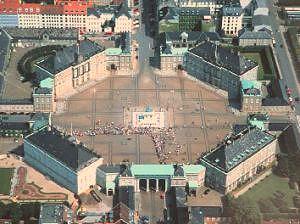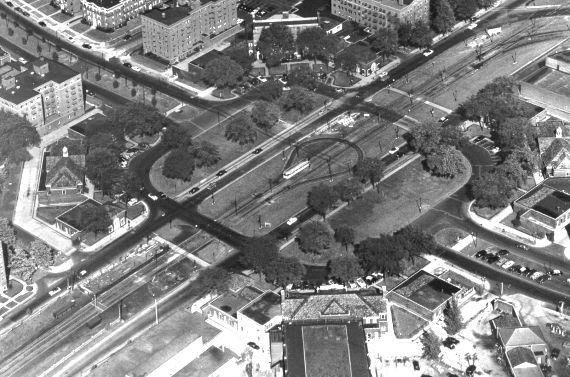|
|
|
|
The Vans saw Shaker Square as a focal point and gateway to their suburb to the east, Shaker Heights. Integral to their vision of "Shaker Village" and the development of Shaker Square was the creation of a rapid transit (light rail) connection to downtown Cleveland. The Vans were at the peak of their power, owning or controlling most of what would become Shaker Heights, the Nickel Plate and other railroads and the Terminal Tower (now part of Tower City) which would open in 1930 as the tallest building between New York and Chicago. To accommodate automobile parking the design changed from a circle to an octagon. This plan suggested 18th-century European royal squares as a design source. Central pavilions flanked by lower wings can be seen in each quadrant. Shaker Square's style and detail are American Colonial - Georgian to conform with the vision for Shaker Heights. (More on the early years.) |
|
|
Amalienborg Square in Copenhagen, said to be the inspiration for
Shaker Square. Four mansions for Denmark's royal family.
|
 |
|
The Square was constructed from 1927 - 29, celebrated its 75th anniversary in November 2004. The Colony Theater was built in 1937. In the 1951 aerial view of Shaker Square, below, note the rapid transit turnaround loop in the center of the green. |
 An aerial view of Shaker Square - 1951 |
|
Who owned
and owns Shaker Square? Larry Albert, or an investment group with him as its leader, is the first owner I remember. He sold to a group that made a $24 million investment in the purchase and renovation in 1999 - 2000. Karen Kurdziel, then a reporter for the Sun Press, wrote a carefully researched story (more) about the two young men who were the "visible guiding lights" in the deal and the corporations that really owned the Square. Then they defaulted and Key Bank took back the property in 2000. Peter Rubin of The Coral
Company, a local developer, campaigned hard and won the right to be,
in his words, "the custodian" of historic Shaker Square. |
|
To learn more about the history of Shaker Square |
|
|